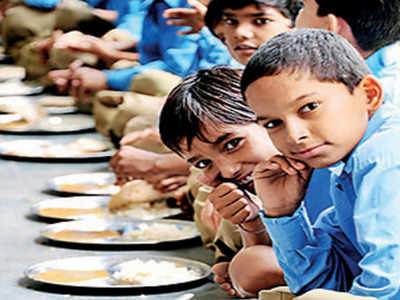Rapid urbanisation and technological strides may have placed Telangana on the global map, but the state continues to wrestle with an age-old curse: malnutrition. Startling new figures reveal that more than 47,000 children suffer from moderate to severe acute malnutrition (MAM and SAM).
What’s most disconcerting is that Hyderabad and its surrounding urban districts – symbols of progress – top the list. If malnutrition stalks children in these developed areas, one dreads to imagine the plight in more remote corners of the state where data is less forthcoming but conditions are likely grimmer.
Rangareddy district leads with nearly 3,000 cases, while Hyderabad, Medchal-Malkajgiri, and Sangareddy follow closely. Together, they account for more than 10,000 cases of what experts term ‘total wasting’ – a sterile term that fails to convey the human tragedy behind it. These children aren’t statistics; they are the emaciated faces of poverty and systemic neglect in a country that prides itself on self-sufficiency in food production.
A stale diet for hungry hearts
For decades, government nutrition programmes have served a monotonous menu of ‘balamrutham’ (a fortified mix), red gram dal, milk, eggs, and murukulu (a deep-fried crunchy rice and dal snack). While these foods are familiar and culturally accepted, their nutritional adequacy is clearly in question. Malnutrition’s persistence demands that we rethink strategies, but innovation appears to be missing from the policy table.

Contrast this with the imaginative solutions implemented elsewhere. In several African nations, where hunger and malnutrition have long been endemic, the introduction of superfoods like moringa (drumstick leaves or munaga aaku) and fortified peanut-based pastes have transformed outcomes for children.
The power of moringa in fighting malnutrition
Moringa, often called the ‘miracle tree’, is one of the most nutrient-dense plants on earth. Its leaves, pods, and seeds are packed with essential vitamins, minerals, and proteins, making it a potent weapon against malnutrition.
Moringa leaves contain twice the protein of milk, essential for muscle development and overall growth. It boasts seven times more vitamin C than oranges, vital for immunity, and four times more vitamin A than carrots, crucial for vision and cell growth. It offers significant amounts of calcium (four times that of milk) and iron, combating anaemia common in malnourished children. Its antioxidants and anti-inflammatory properties boost overall health, reducing the risk of infections that exacerbate malnutrition.
Moringa grows abundantly across Telangana and can be easily integrated into child nutrition programmes as powders, soups, or fortified snacks. Its affordability, availability, and superior nutritional profile make it a sustainable and effective solution for improving children’s health. The National Institute of Nutrition in Hyderabad can devise meals and snacks with moringa to fight malnutrition.
Where progress falters
Malnutrition isn’t merely a failure of food supply; it is a failure of imagination. Telangana’s government and child welfare agencies must think beyond routine provisions and explore dynamic, sustainable models. Nutrition policies stuck in the past focus on calorie counts rather than tackling micronutrient deficiencies.
The message from these statistics is clear. Children are wasting away while waiting for change. Instead of piling eggs and lentils onto the plate, why not serve them a truly nutritious future?




